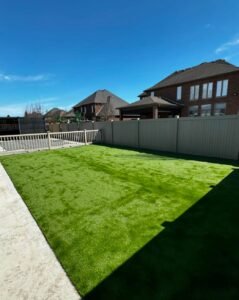Have you ever considered the impact of the surfaces on which children play and athletes compete? In recent years, artificial grass fields have become a game-changer for educational institutions worldwide. Beyond the bright, evergreen appearance, these synthetic marvels offer a plethora of benefits that extend far beyond mere playgrounds. So, without further ado, let’s dive into how schools and universities are reaping the rewards of transitioning to artificial grass fields.
Enhanced Durability and Lower Maintenance Costs
One of the most significant advantages of artificial grass fields is durability. Traditional grass fields can quickly turn into mud pits with heavy use or under adverse weather conditions, leading to canceled games and costly repairs. Artificial grass fields, on the other hand, can withstand extensive use without rest periods, making them ideal for the rigorous demands of school and university sports programs. Additionally, these fields require minimal maintenance, resulting in substantial savings.
Year-Round Playability and Versatility
With artificial grass fields, weather conditions, and seasonal changes are less of a concern. These fields drain quickly, reducing the risk of puddles or mud, and remain playable even in inclement weather. This feature ensures that physical education classes, sports practices, and competitions can proceed without interruption, maximizing the use of facilities throughout the year. Moreover, artificial grass fields are versatile, supporting a wide range of sports and activities on a single surface.
Safety Benefits
Safety is a paramount concern for educational institutions. Artificial grass fields are designed with built-in cushioning to reduce the impact of falls, potentially lowering the risk of injuries such as concussions, sprains, and bruises. The uniform surface also eliminates holes and uneven areas present in natural grass fields, further minimizing tripping hazards. This safety feature is particularly beneficial in schools and universities, where the well-being of students and athletes is a top priority.
Environmental Advantages
In an era of increasing eco-awareness, artificial grass fields offer several eco-friendly benefits. They eliminate the need for water-intensive lawn care, conserving significant amounts of water—an essential consideration in drought-prone areas. Additionally, by reducing the use of fertilizers and pesticides, these fields help prevent chemical runoff, contributing to cleaner local waterways. Schools and universities can take pride in adopting a greener approach to their landscaping needs.
Aesthetic Appeal and Community Pride
Artificial grass fields maintain lush, green appearance year-round, enhancing the aesthetic appeal of school and university campuses. This visual improvement can boost school spirit and community pride, making the institutions more inviting to current and prospective students, as well as to visitors and athletes from other schools. The professional-quality appearance of these fields can also elevate the profile of schools’ and universities’ sports programs, potentially attracting talent and investment.
To conclude, the benefits of artificial grass fields for schools and universities are multifaceted. From durability, cost savings, and playability to safety, environmental advantages, and aesthetic appeal, these synthetic surfaces are transforming educational landscapes. Whether for sports, physical education, or community events, these fields provide a reliable, versatile, and attractive solution.
At Turrific Turf, we understand the importance of quality, durability, and aesthetics in creating functional and inviting outdoor spaces. We specialize in transforming landscapes into vibrant, sustainable, and low-maintenance environments that meet the diverse needs of educational institutions. So, why wait? Let us transform your school or university with artificial grass fields.





